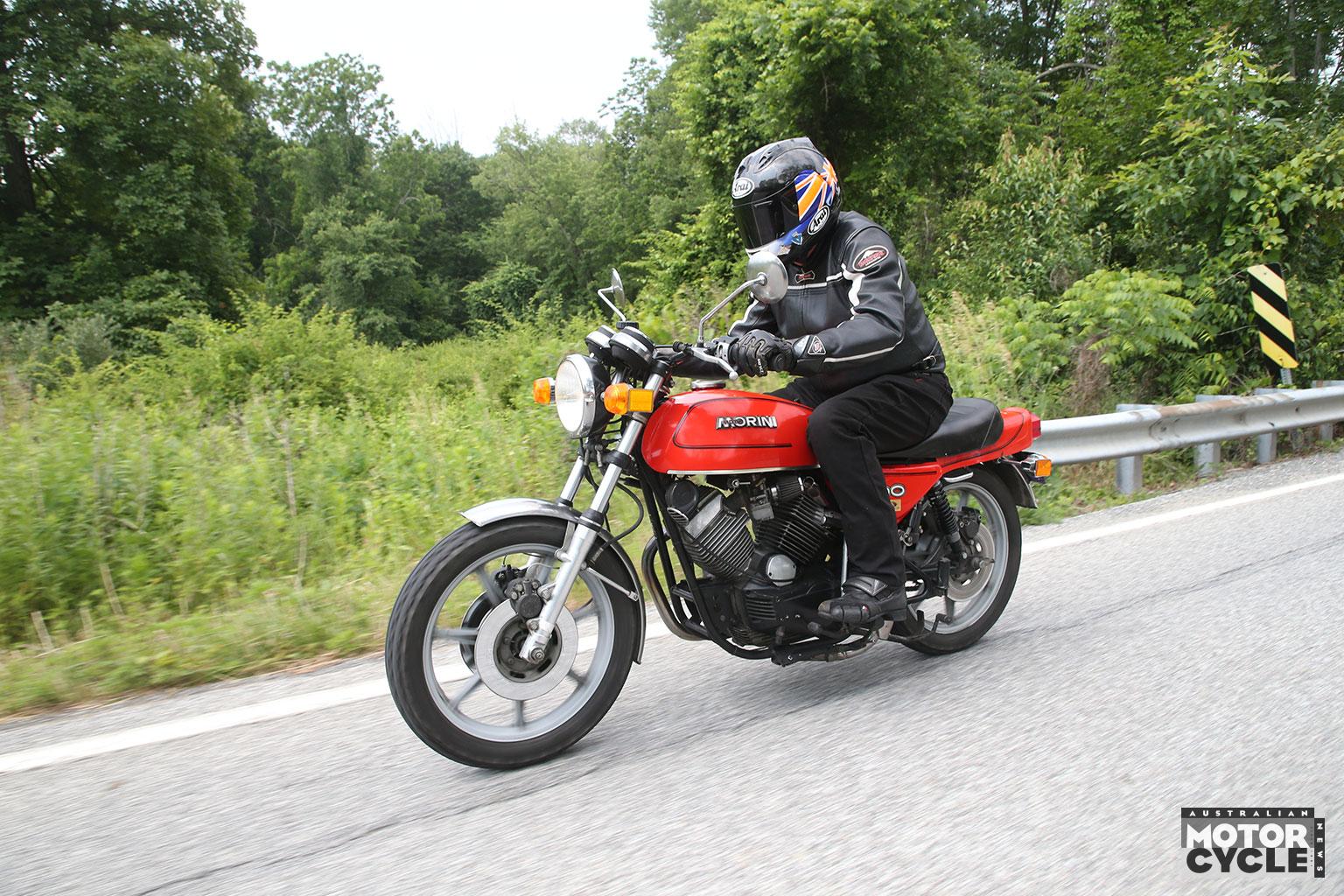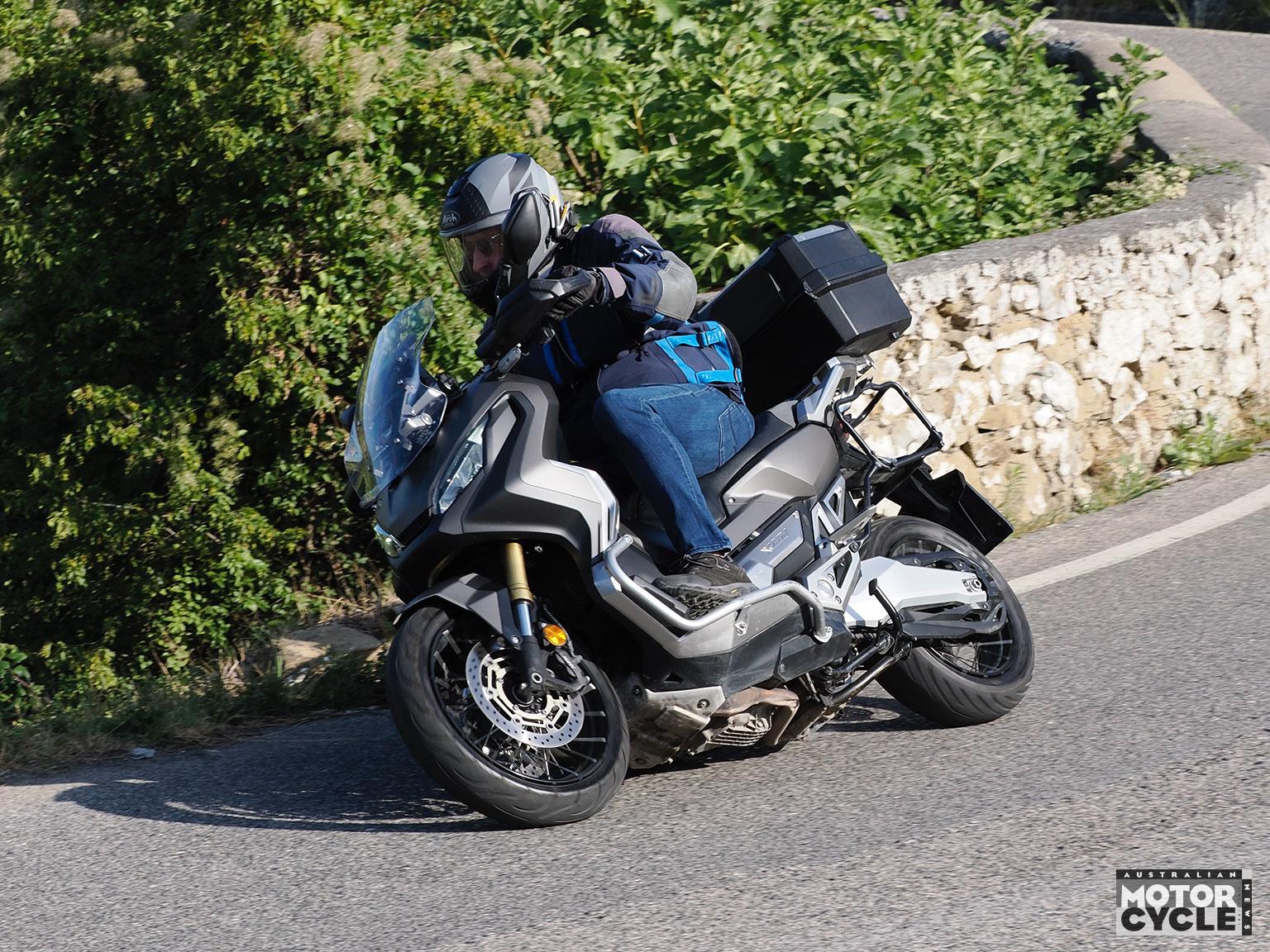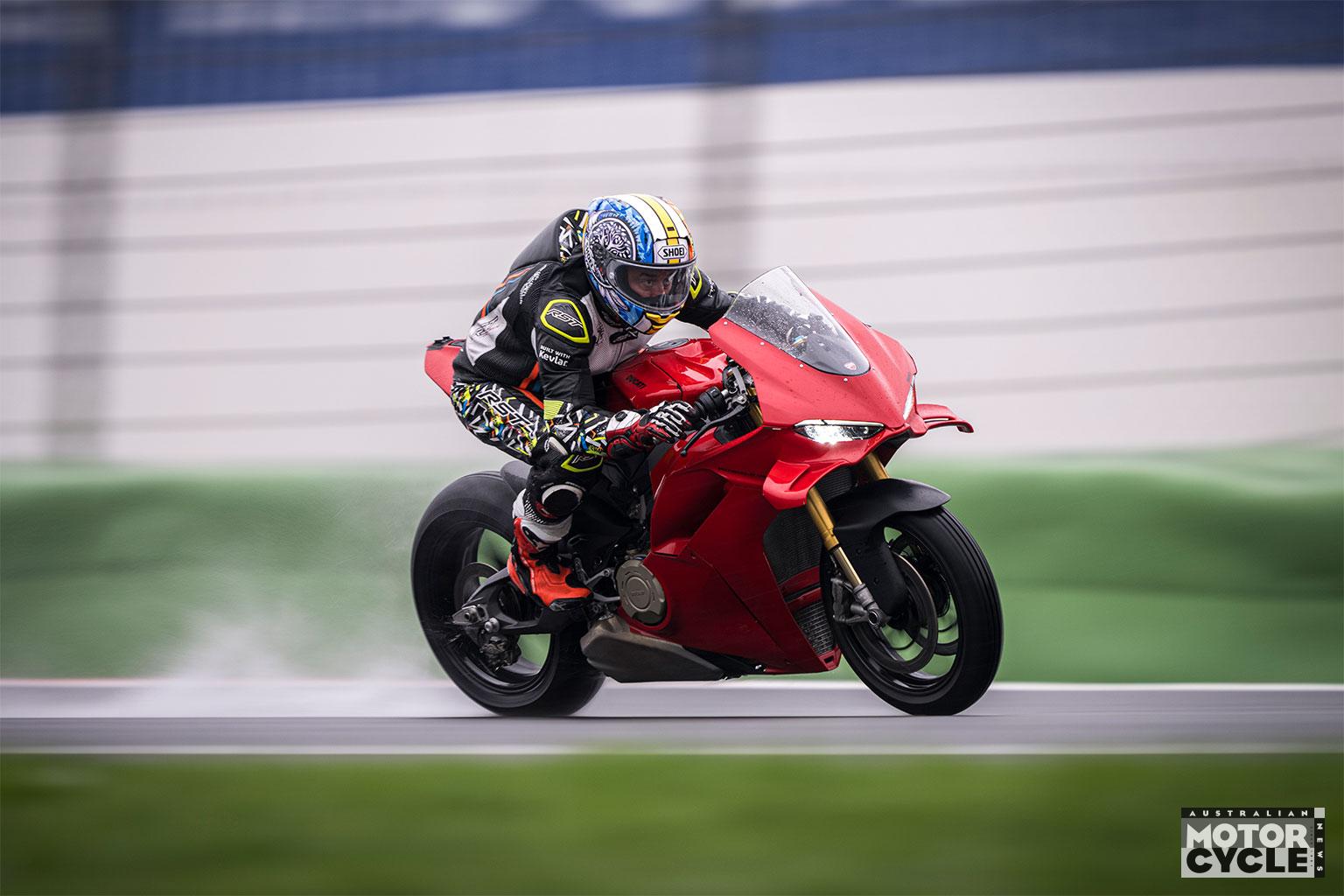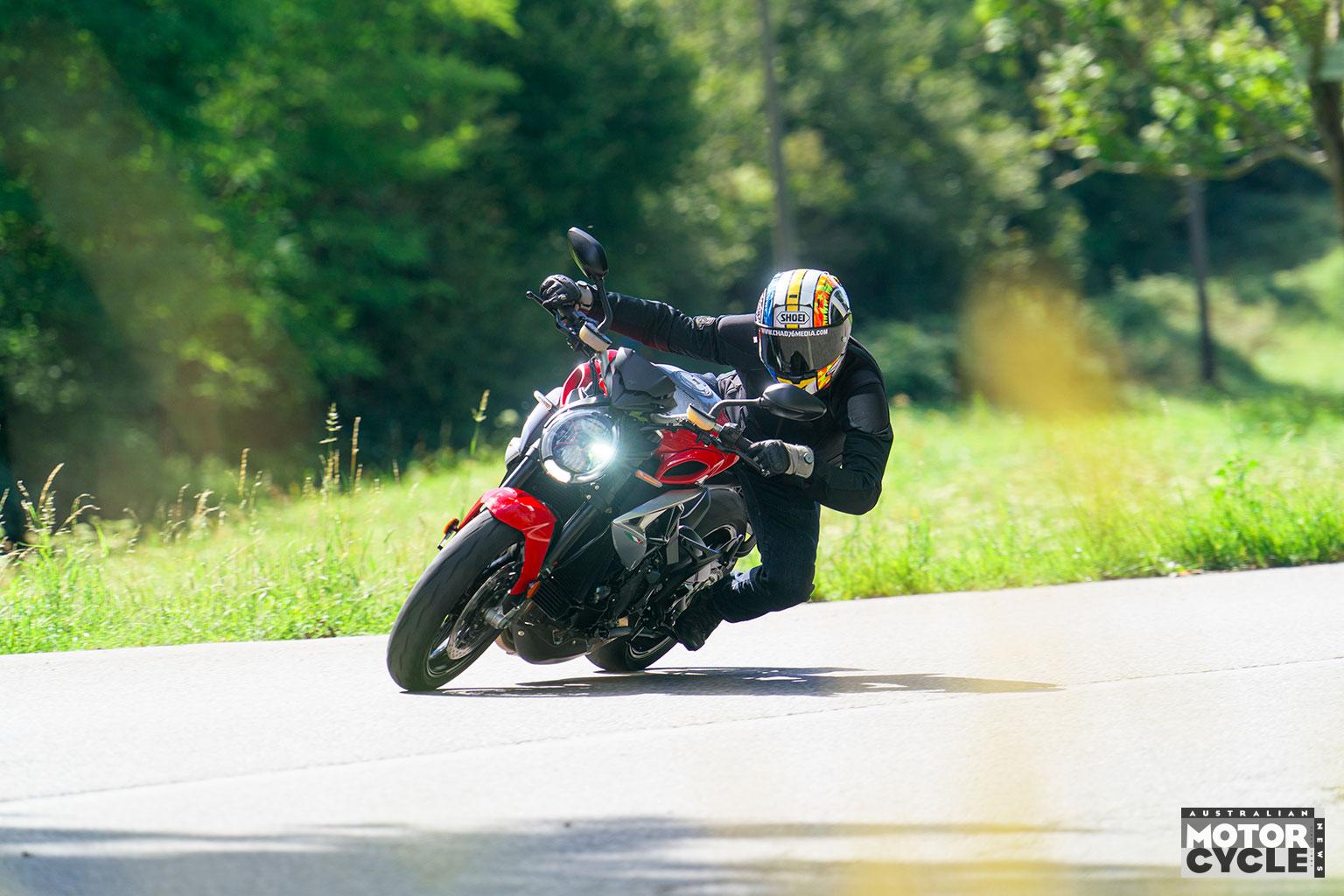A couple of Aussies have spent the best part of a decade developing the radical Motoinno TS3 racebike to take on Moto2.
Ray Van Steenwyk must have a thing against instant gratification – for the past 10 years he has been developing a unique concept that is soon to become very real. In a few weeks, Van Steenwyk and his long-time friend and business partner Colin Oddy will journey to Spain to prepare their Moto2 concept machine for battle in the ESBK Championship. It will feature the mandatory Triumph 765cc triple-cylinder powerplant and all the associated go-fast grand prix goodies – but this will also become the proving ground for the MotoInno TS3, a new hub-centre-steer front-end design that Ray believes has the potential to revolutionise motorcycling.
The racebike is the proof of concept for the duo’s TS3 patented technology with the ultimate goal to licence this unique technology to motorcycle manufacturers for future sports and electric bikes.
Van Steenwyk doesn’t mince his words: “We didn’t build the Moto2 racebike to go racing per se; we built it to compare and test the ‘Triangulated Steering and Suspension System’ against archaic, dangerous, telescopic forks, ‘like with like’, on the level playing field of Moto2, where all bikes are technically the same – apart from the chassis.”

A keen motorcyclist and veteran of the film industry, Van Steenwyk has worked as an art director and 3D animator on such huge productions as Happy Feet, Hulk 2 and Matrix Reloaded. He told AMCN his idea materialised during a bout of chronic fatigue back in 1996.
“I couldn’t do anything and I thought if I don’t get over this, I might shoot myself,” he started. “I was buying and restoring antique motorcycles and seeing all these different front ends. I knew that telescopic forks had problems, but with the other types of systems that I was testing and rebuilding, I realised they all had problems as well.
“I bought a BMW R 50, which had an Earles fork. If you’ve ever ridden a bike with an Earles fork, you know that when you hit the anchors the whole bike lifts up – it’s got these anti-dive features built into it. BMW developed telescopic forks but they didn’t use them for 20 years – they used the Earles fork because they knew telescopic forks had problems.
“Technology and design moved onto upside-down forks, but it doesn’t matter how much money you throw at them, they are always going to have problems because they are a steered braking and suspension system – they are not separate.”
Van Steenwyk explained that with having steering, braking and suspension all in the one unit, those elements all affect each other. When you combine them, the effect is multiplied.
“If you put 100 pounds of force on the front tyre it’s multiplied three times before it gets to the headstock,” he said. “Three hundred pounds going through telescopic forks which bend, compress and have stiction. It’s all sitting in the steering and you don’t want that.”

Ride impressions
Could we learn enough from the MotoInno in one 10-minute session at Sydney Motorsport Park to make a judgment? Setting the unconventional front end to one side, the first thing to get my head around was that this is no ordinary motorcycle – the components are all Moto2 race spec.
The engine is a Triumph 765, mildly worked but not the actual race engine – I was told the actual Moto2 race engine is still in the crate. The frame is completely customised to Moto2 specs, cut out of an aluminium billet, and the same goes for the subframe.
The geometry is GP style, which means it’s higher at the rear and aggressive at the front. The idea is to set the bike up for greater lean angles, but it feels extremely unfamiliar at first. The brakes and gearbox are incredibly precise – in fact the entire machine has a feeling of high precision.
Before I rolled out of pitlane, I was told this prototype was worth over $1.5 million…
The irony is that for me, particularly at 182cm, I’ve always longed for track machines with this kind of geometry – it just suits my body size better – but it takes time to get used to. On the stand you can get a feel of how the front reacts – it doesn’t just compress downwards in the direction of fork tubes like you’re used to, it goes down – but also forwards. The distance of travel isn’t that long either – so right away I’m thinking this is going to be set up to ride extremely firm – which makes sense on a racetrack.
On the road, that downward-plus-forwards travel is a peculiar feeling but riding at normal street speeds the front end responded in a predictable and compliant way – exactly as you’d want it.

Computer simulations
After having a vision to create his own hub-centre steer solution, Ray quickly found out that making that vision a reality is easier said than done, not to mention expensive. He was lucky he could draw on his film industry skills.
“In a previous life I was a director of animation, I worked in advertising initially as an art director in the 80s and then I got into film,” he explains. “I was probably one of the first people to get into computer animation in the 90s – before that I was doing hand-drawn animation. You could see in three dimensions on a computer – you could build anything, think anything and prove anything.
“In film, if we were doing something for live action – maybe we would have to build a car or a motorcycle or something – you basically had to build it as ‘real world’ in the computer. It had to function properly, so I was picking up engineering experience through that.
“The next step was to get involved with CAD, to make sure everything was perfect and could actually be constructed and built to extreme tolerances.”
With a prototype nearing completion in computer form, it was here that his good friend and colleague Colin Oddy stepped in.
“Colin was the one who said to me, ‘Stop mucking around with the animation stuff, let’s build this in real life’,” he said.
Oddy has a background in film production, and they met while working on a movie.
“I was in between houses – in the film industry you’re often moving around – and I saw what Ray was up to in his spare time,” he recalled. “Ray went off to Canada to work on another film, and while he was gone I went about finding funds to manufacture a prototype.
“We quickly worked out that nobody was going to put money into a concept – we had to build a bike – that was 2008.”
Van Steenwyk revealed to AMCN they spent about $350k of their own money in the first four years to produce a prototype: “During the day I was working on Happy Feet, and in the evenings and weekends I was working with the guys who built all the machines for Mad Max.”
That team worked in what was called standby props. If somebody needed any kind of film prop at short notice, these were the guys who built it – and they could build anything.
“It took us two years to get everything machined and then another six months to put it together,” Van Steenwyk said. “That was the Ducati 900SS and we tested it at the HART (Honda Australia Rider Training) centre in Ryde, (NSW).”

Hub central
If the biggest advantage of hub-centre-steer motorcycles is the separation of steering, suspension and braking, the biggest disadvantage perhaps is the perceived lack of feel.
There have been several prominent examples of hub-centre-steer motorcycles in the past such as the Ron Haslam-piloted Elf 500 racer, Yamaha’s GTS 1000 sports-tourer road model, the Bimota Tesi designs or the Vyrus 984 sportsbike. None of these really took off commercially. The triangulation is the big difference in the MotoInno TS3’s system.
A car has a stub axle with a pivot system. It’s the same situation with hub-centre steer but instead of a stub axle it’s a through axle. The forces that go through that hub are much less than a telescopic fork because you don’t have that 70-80cm lever.
“Our system is very much like a car,” Van Steenwyk said. “Basically what I’ve done is turned the system you would see on a car by 90 degrees and then triangulated it for stability. The structure of the swingarms and the triangulation to stiffen it is what makes the MotoInno design unique.”

The initial test
The HART centre is an ex-Police training track in Ryde. It’s small but it has all types of corners – on camber, off camber, dips and a straight.
“On the Ducati 900SS I remember doing about 100km/h down the straight and I was thinking ‘it works, it functioned properly, it turns and it didn’t kill me’,” Van Steenwyk said.
The duo had the proof of concept which they took back to Queensland where they became involved with Paul Morris Racing.
“They let us use their track for a full year, constantly refining it – testing new geometries. Then we were introduced to Warren Willing – he was working with Valentino Rossi at the time and was back in the country for cancer treatment – and he set the Ducati up properly. After walking away and scratching his head, he came back about a week later with a solution. That’s when we were really able to show off the prototype.
“We figured the next step was to put the system in a Superbike, but we were convinced to change tack and pursue a racing proving ground. The thinking being was we could compare data against telescopic solutions like for like – apples against apples.”

The next step: Moto2
The leap to racing hasn’t been without its challenges. After pursuing the Moto2 design the team initially lost a whole year after Dorna changed from Honda to Triumph engines. The 765 has taken about three years to build with all sorts of setbacks including Covid, a price hike in materials and one of the engineers becoming very ill.
Regular test rider Jordan Carlsson – a former ASBK Supersport front runner – has been on track for a total of 18 days. During practice for the 2024 St George Summer Night Series, the MotoInno team had a big-name test rider on the bike which saw the TS3 reaching lap times of the winning Supersport machines. The rider’s current contractual agreements mean we can’t tell you who it was…

The next challenge
“We can’t afford to race Spanish Moto2,” Van Steenwyk said. “What we intend to do is take the bike to Europe, exhibit it and run it at trackdays to hopefully attract a team to campaign our bike alongside their telescopic front-end bike for the last few races of the season.
“Danny Aldridge – MotoGP technical director – has encouraged us all the way and been very helpful. The engine we have now is effectively still stock; it’s had nothing major done to it. Dorna have seen our technology and after we told them we want to prove it in Moto2, they gave us a whole lot of information they would only normally give to racing manufacturers.
“They know the development for telescopic forks has stagnated. They also recognise that the stakes are high – if something goes wrong, the whole world knows. We have to make a good impression to attract further investment.
“It’s a big challenge – we have to arrive in Spain, develop relationships and get the bike running properly. The racebike is the proof of concept for the technology.”

Patents cost big
Writing a patent is as hard as building a prototype.
“You’ve got to describe in words what you have in a visual format in front of you,” Van Steenwyk said. “It’s so complex it’s hard to describe – and you have to describe it in such a way that the description is accurate and you have your arse covered – but not so revealing that you give away your secrets! You use broad terms to encapsulate a wider concept, but not too definitive.”
Oddy and Van Steenwyk are currently six years into their patent but still have 14 left.
“The cost over the lifetime of the patent is about $350k – and that doesn’t include the attorney’s fees,” Van Steenwyk said. “We’re covered for eight territories, including Europe and America.”

Complexity and maintenance
“At the moment it’s complex to build because it’s a prototype. It’s over-engineered at the moment,” Oddy said. “When a manufacturer gets a hold of it, they can mass produce it to a cost point. Most of the time on swingarms you’re using bushes, not bearings, so maintenance should be minimal.”
While the focus is very much on the Moto2 racing category, the whole aim of the MotoInno project is to build a more stable, safer roadbike.
“You can brake and steer at the same time,” Van Steenwyk said. “You don’t suffer from harmonic oscillations. We can see this being particularly useful on electric bikes because of their weight and they’re pushing that weight through big levers. The sooner we prove it the sooner we can get our system on a production bike – but we have to challenge the existing way of thinking, and that’s not easy.”
Harry Voight – the perfect test rider?

Racing in the World Junior GP Moto2 championship, Harrison Voight recently had the TS3 on track for a test session at Queensland Raceway. With experience in ASBK Superbike, Moto3 and Red Bull Rookies, he was impressed by the TS3’s straight-line stability, negating the need for a steering damper.
“With normal forks you would be more worried about the front, making sure it was planted and not going to tuck. After I had done some laps I could trust the front and focus more on the rear. Braking in a straight line it felt neutral and was very stable. You have to be a little more mindful of the rear.
“On a normal bike when you release the brake, you push on the ’bars to turn in. It wasn’t as easy on the TS3, it was very different. It took a few sessions to figure it out – by the end I was able to understand it better by trail braking more. I tried different things – releasing the front brake, using the rear brake – it would be interesting to try the bike on a more technical track – Queensland Raceway is a fairly basic layout. By the end of the day I was braking at the same points as a normal bike but with more pressure.”
There was a change in rake from 19 to 20 degrees, which Voight said made the bike feel a little more raised in the rear, helping him tip into corners.
“Considering the tyre hadn’t been changed from the first session and it had quite a lot of laps on the right-hand side, it was a significant difference. You don’t feel the rear pushing the front like you would with telescopic forks, it kind of runs wide. A normal motorcycle will still do that, but you can feel this with your hands – it didn’t want to steer – but the change to the rake did help that.”
Another unexpected issue was the tyres not having to work as hard, thus not reaching their optimum operating temperature and, in turn, not providing the same amount of feedback to the rider. Low tyre wear is an advantage on the road, but another part of a complex puzzle to be solved for the racetrack.











